This is a list of many Famous Union Generals of the Civil War. However, it is a list and not a rank.
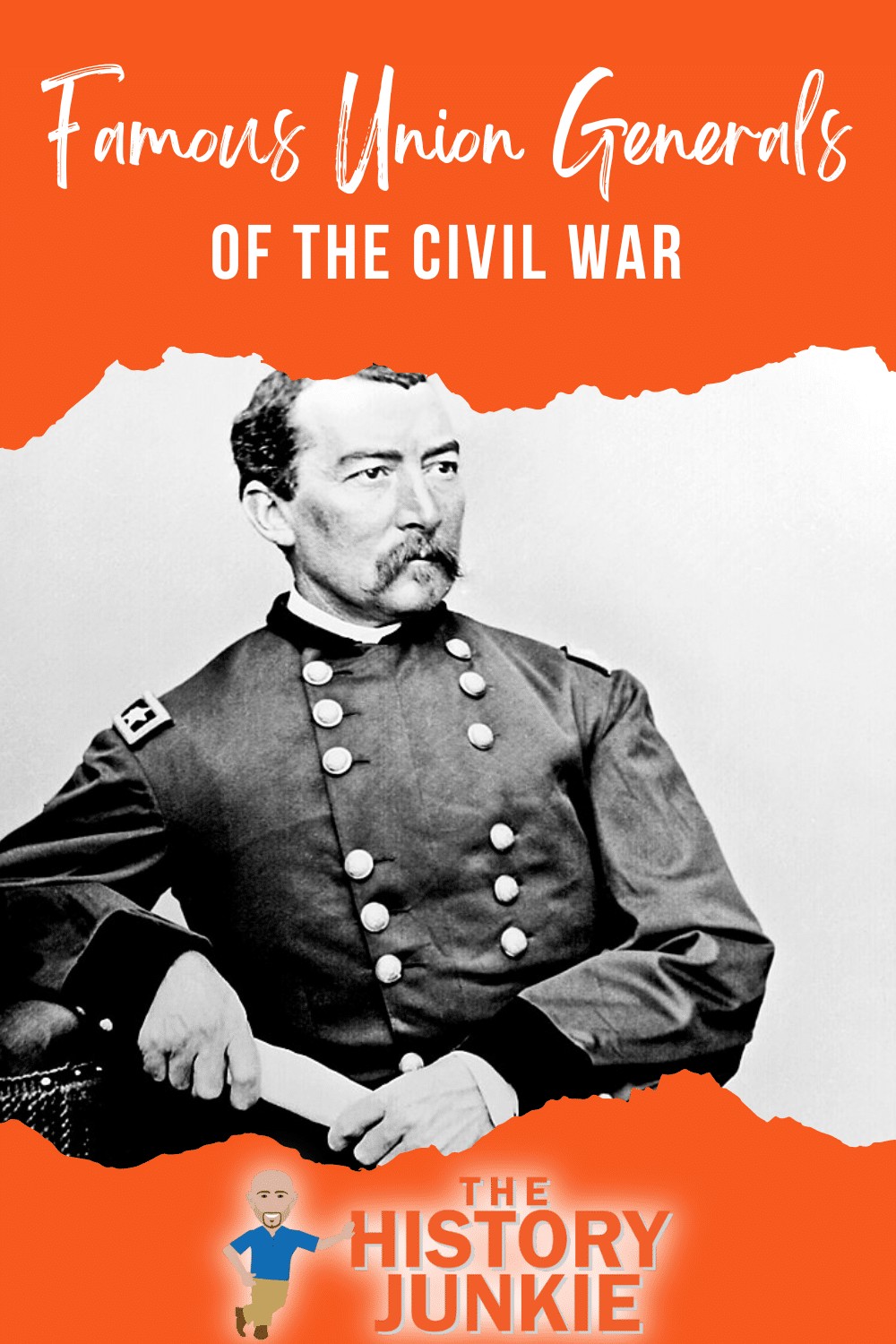
With the exception of a few generals, the Confederate generals seem to get all of the attention when it comes to the Civil War.
Also Read: Famous Confederate Civil War Generals
While there were some Union Generals who struggled, and some are listed here, by the end of the war, Abraham Lincoln had his leadership in place with men who knew how to fight the war.
Jump to:
The primary difference between the Union and Confederate generals is that Confederates were able to defend rather than attack. The attackers were going to take more casualties, so it was necessary for generals to use their manpower to their advantage.
At the beginning of the war, they did not have that leadership, but by the end, they knew how to wage total war against the Confederacy,
1. Ulysses S. Grant
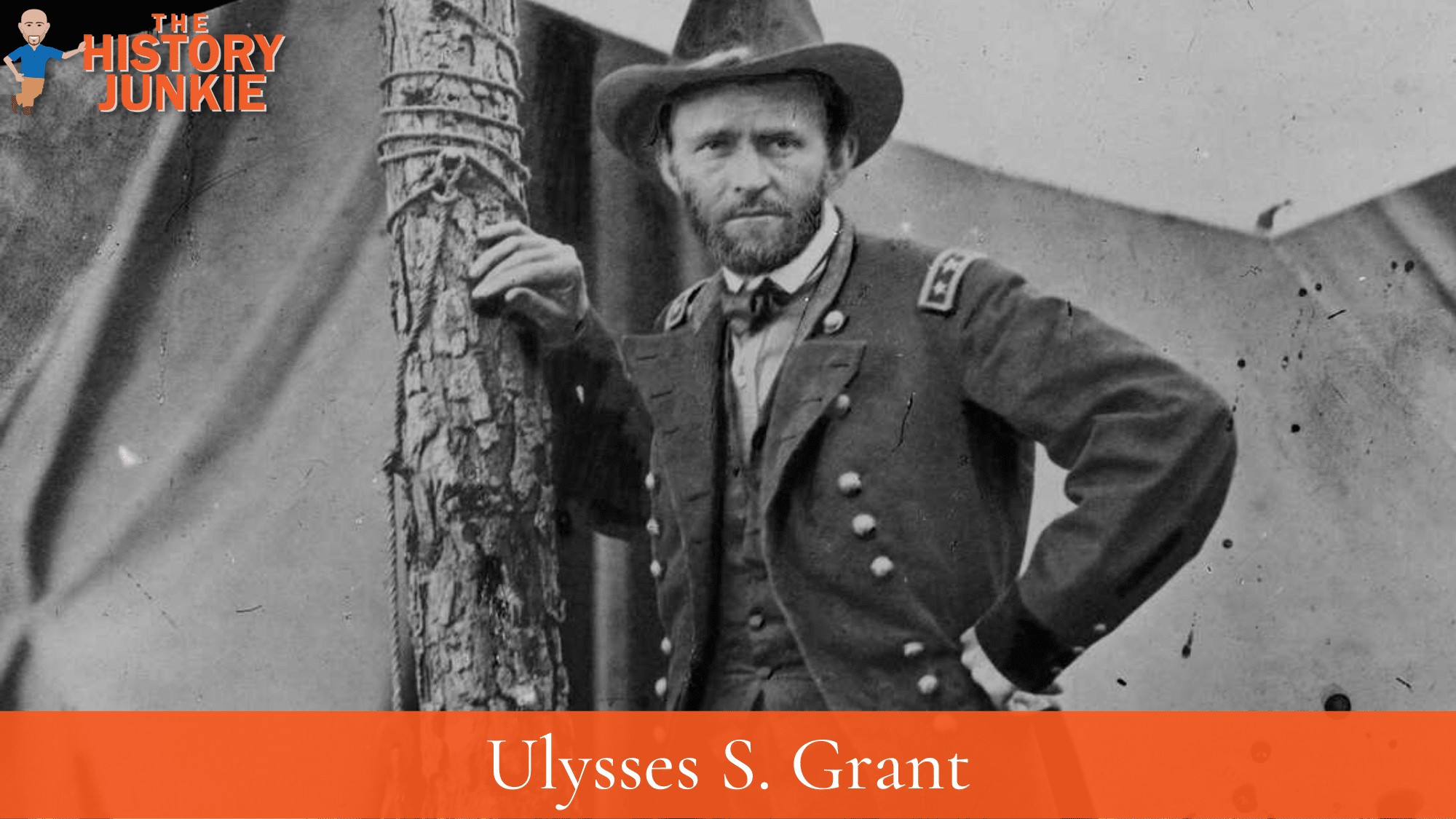
He was calm under fire, seemed to bounce back from failure, and knew how to press his advantages.
At the Battle of Shiloh, the Union took heavy losses and looked to be on the verge of defeat, but Grant stayed calm, and when Sherman spoke to him the evening after the first day, he uttered his famous words, "Lick em tomorrow though," and he did. The next day, reinforcements arrived, and Grant pressed the Confederates again and defeated them.
There is a reason that Ulysses S. Grant defeated Robert E. Lee and not George McClellan. It is because he knew his advantage was in manpower. When he took heavy losses, he filled his lines and kept pushing forward. While McClellan cowered with his larger army, Grant continued to press and force Lee to make another move. He knew to fight a war of attrition.
While aggression could sometimes be his flaw, such as in Cold Harbor, it was this that ended the war. He battered Lee's tired army, and even if Lee was the better tactician, he could not overcome his lack of logistics.
At the end of the war, he was merciful to the rebels who were surrendering. The terms he gave Lee helped heal the nation, and the war itself would lead General Grant to become President Ulysses S. Grant.
Read Article: Ulysses S. Grant Family Tree
Best Moment:
Surrender at Appomattox - Honor is something lacking in this generation, but Grant had it. He could have made terms very cruel for the rebels, but he chose not to and rather begin healing the nation. Robert E. Lee maintained his respect for Grant throughout his life and, even as a professor, never let a student speak ill of his former nemesis.
Worst Moment:
Battle of Cold Harbor - It cost the Union 17,000 lives in a matter of minutes, and attacking the well-fortified positions did not present any advantage. Later in his life, Ulysses S. Grant said this about the battle in his memoirs:
I have always regretted that the last assault at Cold Harbor was ever made. ... No advantage whatever was gained to compensate for the heavy loss we sustained
It bothered him until his death.
2. William Tecumseh Sherman

William Tecumseh Sherman was General Grant's best General and would eventually command Grant's Army in the Western Theatre after Grant was promoted to the East to fight Lee.
Despite how he ended the war, he did not find success in the war until much later. Early in the war, he struggled at Bull Run, and despite being placed in command of a Union Army in Kentucky, he was eventually relieved of his command and sent back to his home in Lancaster, Ohio.
It was believed he was insane, and Sherman admitted to struggling with mental issues. He would eventually recover and return to duty. He would begin to work his way back and even help Grant with logistics during his attack on Fort Donelson.
He would get his wish and serve under Grant, and it would be at the Battle of Shiloh that he rebuilt his reputation. He rallied his men into an orderly retreat to avoid a rout from a surprise Confederate attack and helped lead a counter-attack the next day to win the battle.
He and his young protege, General James B. McPherson, helped Grant capture Vicksburg with unorthodox tactics. The process took a while, and some newspapers began to criticize Grant as a drunkard and Sherman as his insane sidekick.
After Grant's promotion, Sherman took over and implemented his famous March to Atlanta. He would take the war to the South and hurt their economy more than it already had. Along the way, he continued to liberate slaves and destroy railroad tracks. He would eventually capture Atlanta and then make his famous March to the Sea, where he captured Savannah.
He would then travel north into the Carolinas, where he captured Columbia and took the surrender of General Joseph E. Johnston.
Read Article: William Tecumseh Sherman Family Tree
Best Moment:
Sherman's March - The greatest moment in General Sherman's career was his march through the South. His march and the inability of the South to stop him destroyed the morale of the people and the Confederate Army. His well-timed victories also aided Abraham Lincoln's victory in the election of 1864. His march is still controversial in modern times, with some calling it brutal and others believing it to be a stroke of genius.
Worst Moment:
Mental Health Breakdown - At the beginning of the war, it seemed as if Sherman would be able to rise through the ranks quickly, however, he struggled with severe mental health issues. It would be through the trust of Grant that Sherman emerged and became the most feared General in the Union Army.
3. James Birdseye McPherson
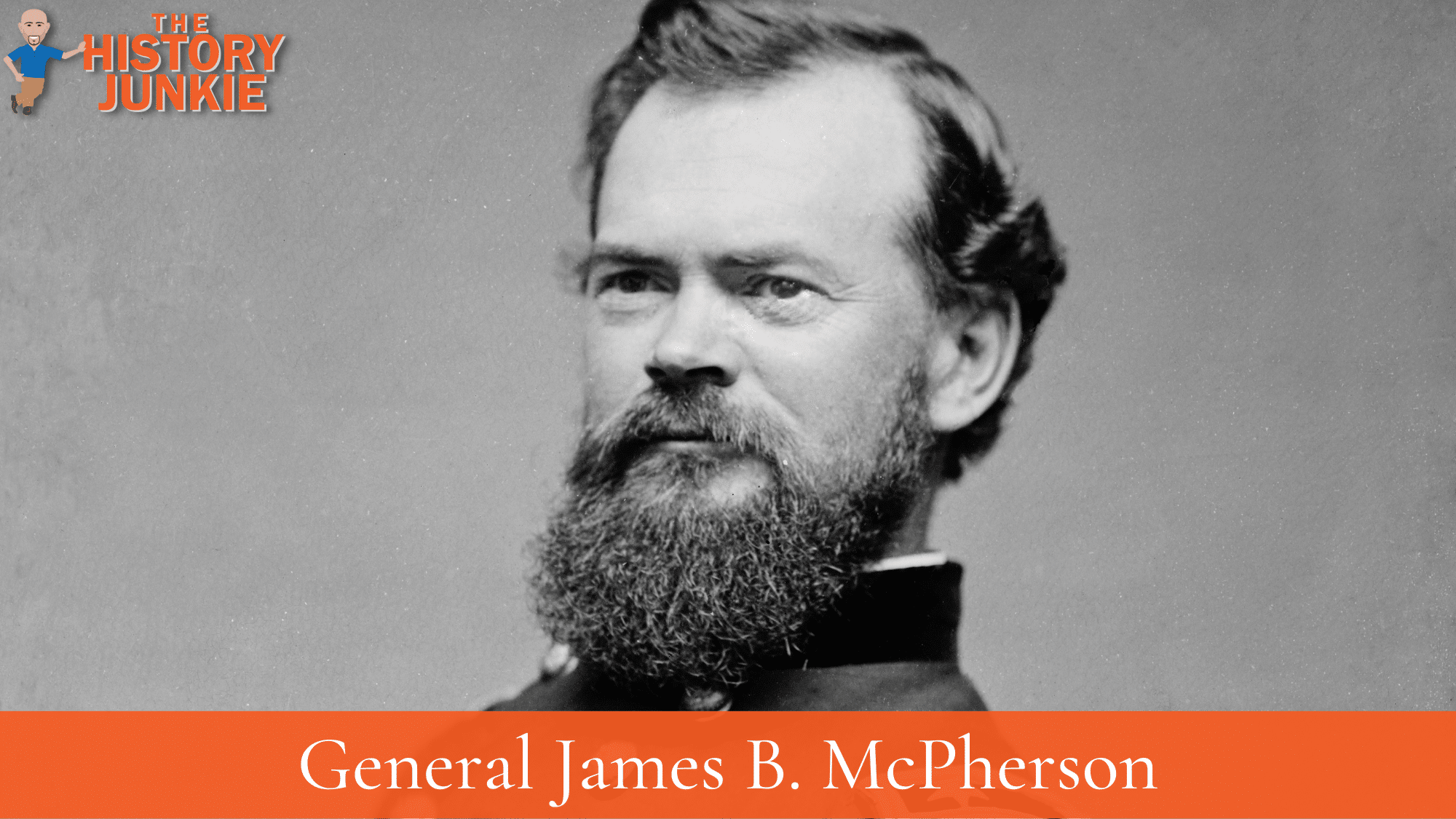
He was possibly the most well-liked General on the Union side. Everyone, including his enemies, respected his intelligence and ability. It was believed had he not died in Atlanta that, he would have become President of the United States.
James McPherson had an engineering background, which came in handy during the multiple sieges that Grant had to implement during the Vicksburg Campaign.
He served with distinction throughout the campaign, and after Grant was sent east to fight Lee, McPherson would serve under General Sherman.
On March 12, 1864, he was given command of the Army of the Tennessee after its former commander, William Sherman, was promoted to command of all armies in the West.
He then requested leave to go home and marry his fiancé Emily Hoffman in Baltimore, Maryland. His leave was initially granted but quickly revoked by Sherman, who explained McPherson was needed for his upcoming Atlanta Campaign.
McPherson's army was the Right Wing of Sherman's army, alongside the Army of the Cumberland and the Army of the Ohio.
Unfortunately, it would be during this campaign that James McPherson would lose his life after being shot. His former classmate and Confederate General John Bell Hood said this about him:
I will record the death of my classmate and boyhood friend, General James B. McPherson, the announcement of which caused me sincere sorrow. Since we had graduated in 1853, and had each been ordered off on duty in different directions, it has not been our fortune to meet. Neither the years nor the difference of sentiment that had led us to range ourselves on opposite sides in the war had lessened my friendship; indeed the attachment formed in early youth was strengthened by my admiration and gratitude for his conduct toward our people in the vicinity of Vicksburg. His considerate and kind treatment of them stood in bright contrast to the course pursued by many Federal officers
When Sherman heard the news, he cried openly for his dear friend. He wrote McPherson's fiance and said:
My Dear Young Lady, A letter from your Mother to General Barry on my Staff reminds me that I owe you heartfelt sympathy and a sacred duty of recording the fame of one of our Country's brightest and most glorious Characters. I yield to none on Earth but yourself the right to excel me in lamentations for our Dead Hero. Why should death's darts reach the young and brilliant instead of older men who could better have been spared?
His fiance never married.
Read Article: James Birdseye McPherson Family Tree
Best Moment:
Vicksburg Campaign -McPherson came into the Union Army as an engineer and would prove himself on the battlefield as well. During the Vicksburg campaign, he displayed how versatile he could be by helping plan the various sieges that occurred and having success against the Confederates in the field. He played a key role in Grant's capture of Vicksburg.
Worst Moment:
Battle of Atlanta - Despite performing well and making the right calls, he ended up in a situation that resulted in his death. McPherson had a fiance whom he requested to go home and marry but was denied, which adds to the tragedy. He also had plenty of recognition and would have probably been a President of the United States due to his likability.
4. John Reynolds
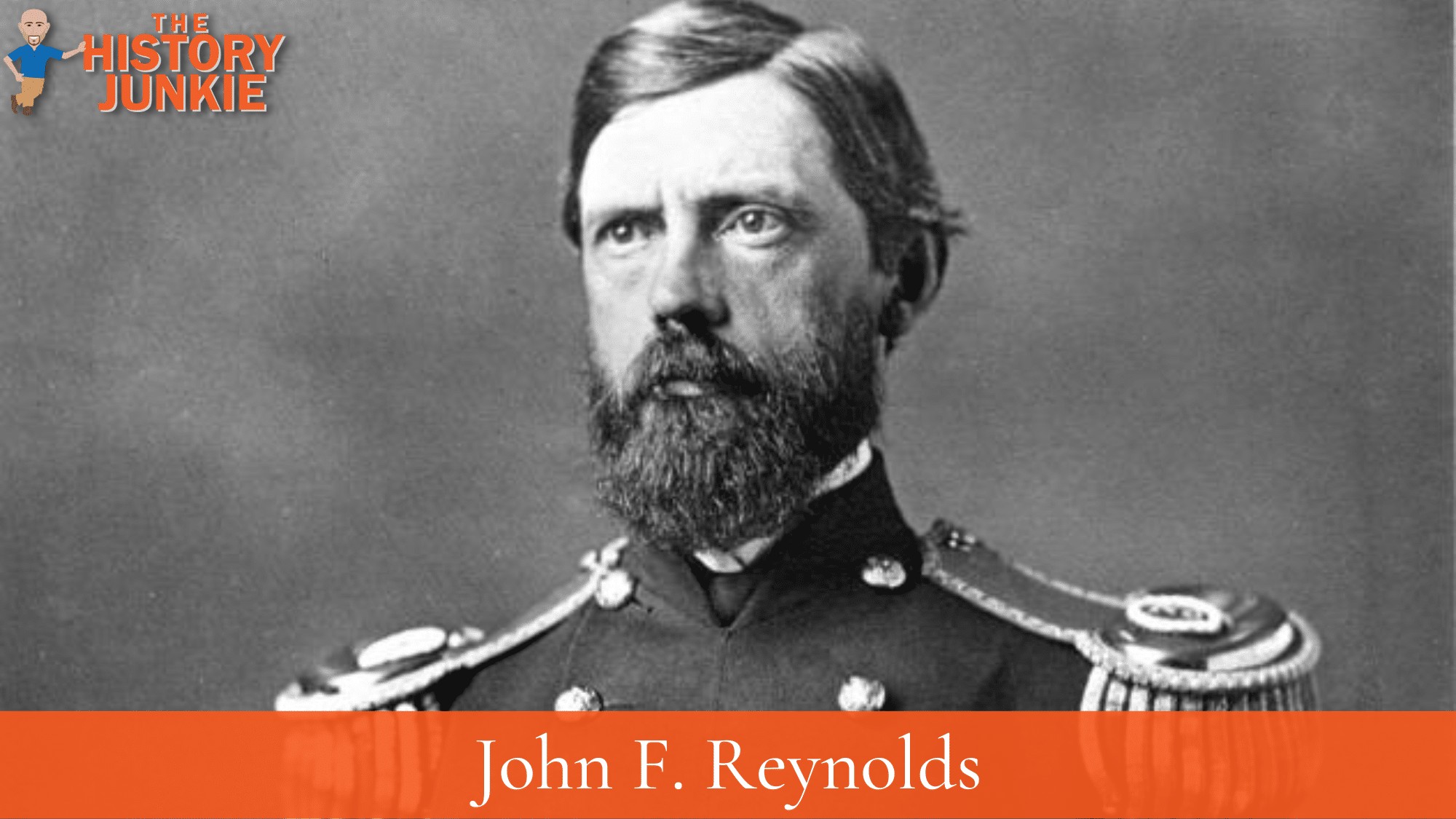
He was considered the best General in the Army at the time of the Battle of Gettysburg and was even offered command of the Army of the Potomac by Abraham Lincoln, but refused to take the command unless he was allowed to be isolated from bureaucrats in Washington who he believed made bad decisions. Lincoln would not agree and instead promoted George Meade.
He fought well in the eastern theatre and, despite failings from senior officers, always seemed to have a good showing. In the Battle of Second Bull Run, his troops halted the charging Confederates and allowed the Union an orderly retreat that saved them from much worse. During Fredericksburg, he received flawed commands and did not support Meade's breakthrough of the Confederate line, and thus the breakthrough failed.
During Chancellorsville, he became frustrated with General Hooker, who seemed afraid to attack the Confederates, and instead opted not to take the advice of his fellow officers who wished to attack.
He was well-respected by his peers and, unfortunately, was shot and killed on the first day of the Battle of Gettysburg.
Read Article: John Reynolds Family Tree and Descendants
Best Moment:
Battle of Beaver Dam Creek - With the Confederates launching an aggressive and well-coordinated attack, Reynolds and his men mounted a stiff defense and pushed them back. The Confederates took heavy casualties due to Reynolds's defense, and it would be one of the only bright spots that occurred during the Seven Days Battles.
Worst Moment:
Battle of Gaines Mill - Shortly after his great defense of Beaver Dam Creek, Reynolds made a mistake due to not sleeping for two days. He was captured in Boatswain's Swamp, Virginia. Thinking he was in a place of relative safety, he fell asleep and was not aware that his retreating troops left him behind. He was extremely embarrassed when brought before the Confederate general of the capturing troops.
5. George Meade
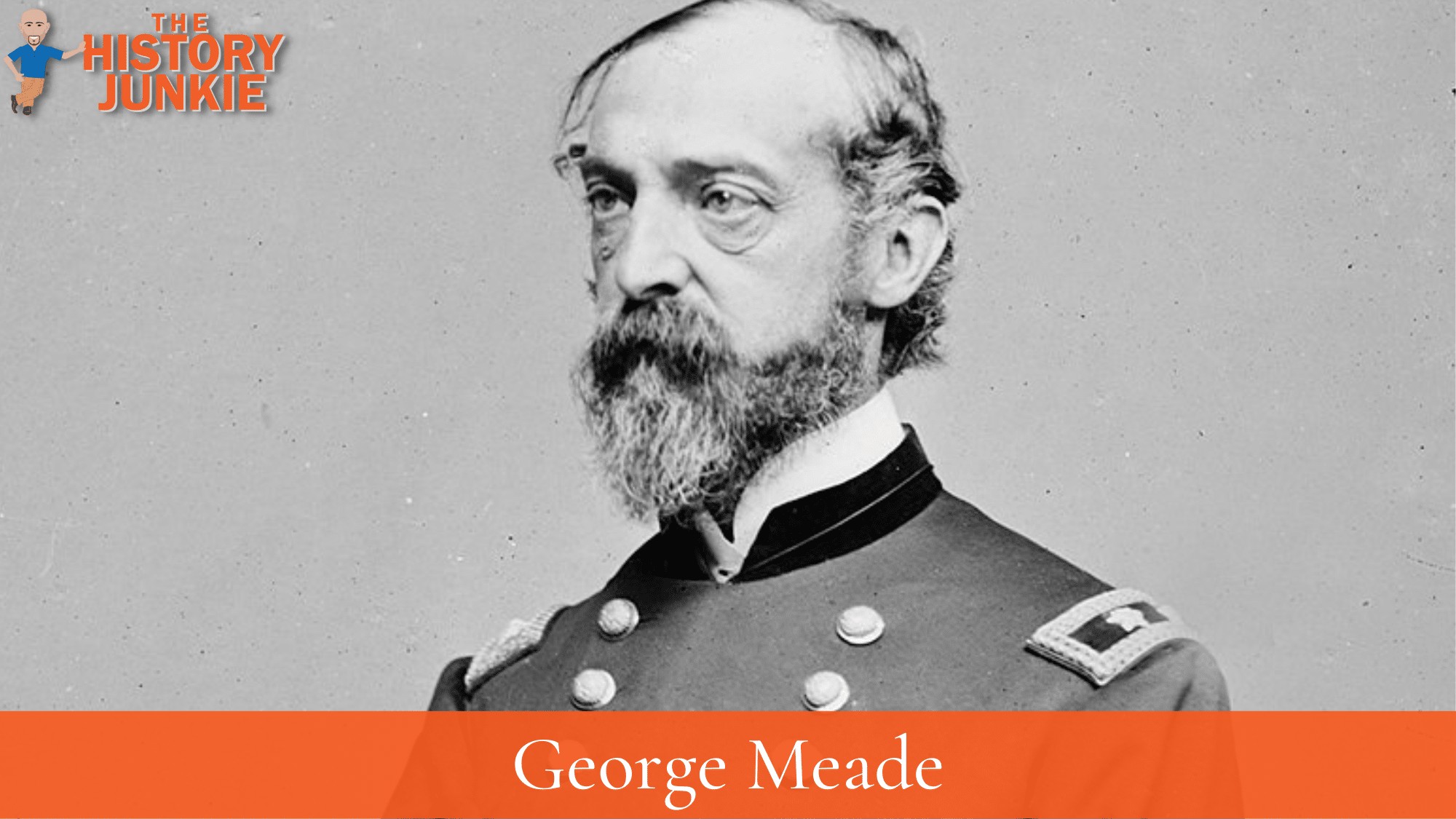
General George Meade is one of the most overlooked Generals of the Civil War. While many remember that he was the Commander-in-chief of Gettysburg when he successfully defeated Robert E. Lee's invasion of the North, he is overshadowed by other commanders such as Ulysses S. Grant and William Sherman.
Meade was an excellent commander, but his actions at Gettysburg hurt his reputation as an aggressive commander.
Meade saw success at the Second Battle of Bull Run, the Battle of Antietam, and the Battle of Fredericksburg.
At the Battle of Fredericksburg, he was the only Union General to break through Lee's line and dealt some huge blows to General Stonewall Jackson. If not for the miscommunication with General Reynolds, the battle may have had different results.
After Grant's promotion, Meade served with him, but Grant controlled the strategy. Grant was known for his unrelenting attacks. Meade served well but did not care for Grant's war of attrition and how many casualties the Union was taking. Despite their disagreements, Grant recommended Meade for promotion.
Read Article: George Meade Family Tree
Best Moment:
Battle of Fredericksburg - The battle was a complete disaster for the Union. They launched brave frontal assaults on well-defended Confederates that led to mass casualties. However, the bright spot was George Meade, who created a gap in Stonewall Jackson's line. There was a miscommunication with General Reynolds, which caused Meade to fall back, however, he showed his ability and aggression at Fredericksburg.
Worst Moment:
Battle of Gettysburg - It is unfortunate that Meade is remembered for his failure to counter-attack Lee at Gettysburg because his defense was flawless. He had only been the commander of the Army of the Potomac for less than a week before Lee's invasion. The Confederates were dominated on Day 2 and Day 3 of the battle. After the failure of Pickett's charge, Lee's army was vulnerable. If Meade had attacked Lee all the way back to Virginia, he might have destroyed Lee's army, thus shortening the war.
6. George Thomas

Robert E. Lee, James Longstreet, and many other southern commanders left the United States Army and took up arms for their home state. This was not true for George Thomas.
George Thomas thought about joining the Confederacy but did not, and that choice would cost him a relationship with his Southern family. He would never speak to his sisters again as they said that they did not have a brother. Despite this, he stayed loyal to the Union.
He won one of the first Union victories in the war at Mill Springs in Kentucky and served in important subordinate commands at Perryville and Stones River.
His stout defense at the Battle of Chickamauga in 1863 saved the Union Army from being completely routed, earning him his most famous nickname, "the Rock of Chickamauga."
He followed soon after with a dramatic breakthrough on Missionary Ridge in the Battle of Chattanooga. In the Franklin–Nashville Campaign of 1864, he achieved one of the most decisive victories of the war, destroying the army of Confederate General John Bell Hood, his former student at West Point, at the Battle of Nashville.
Despite all of his success, he is not remembered like other Union Generals. He was more cautious and deliberate than Grant or Sherman, who needed to be more aggressive and press their superior numbers.
He also did not write any memoirs after the war, and his birth family destroyed any letters of correspondence he sent to them.
Read Article: George Henry Thomas Family Tree
Best Moment:
Battle of Nashville - A solid argument can be made that his best moment was at Chickamauga, but I believe it was the utter destruction of John Bell Hood's army at Nashville. Hood was trying to force Sherman from his march and invaded Kentucky. The aggressive Hood attacked the stout defender in Thomas and was cut down. This would end the Army of Tennessee as an effective fighting force and be the last action John Bell Hood would ever see.
Worst Moment:
Battle of Perryville - Thomas performed well at the battle, but prior to the battle, he was offered command of the Army of Ohio and refused. After the battle, the Union promoted William Rosecrans to the position that was held by Don Carlos Buell. Thomas became upset because Rosecrans was a junior officer, but he was reminded that the Union offered him the position, and he refused.
7. Winfield Scott
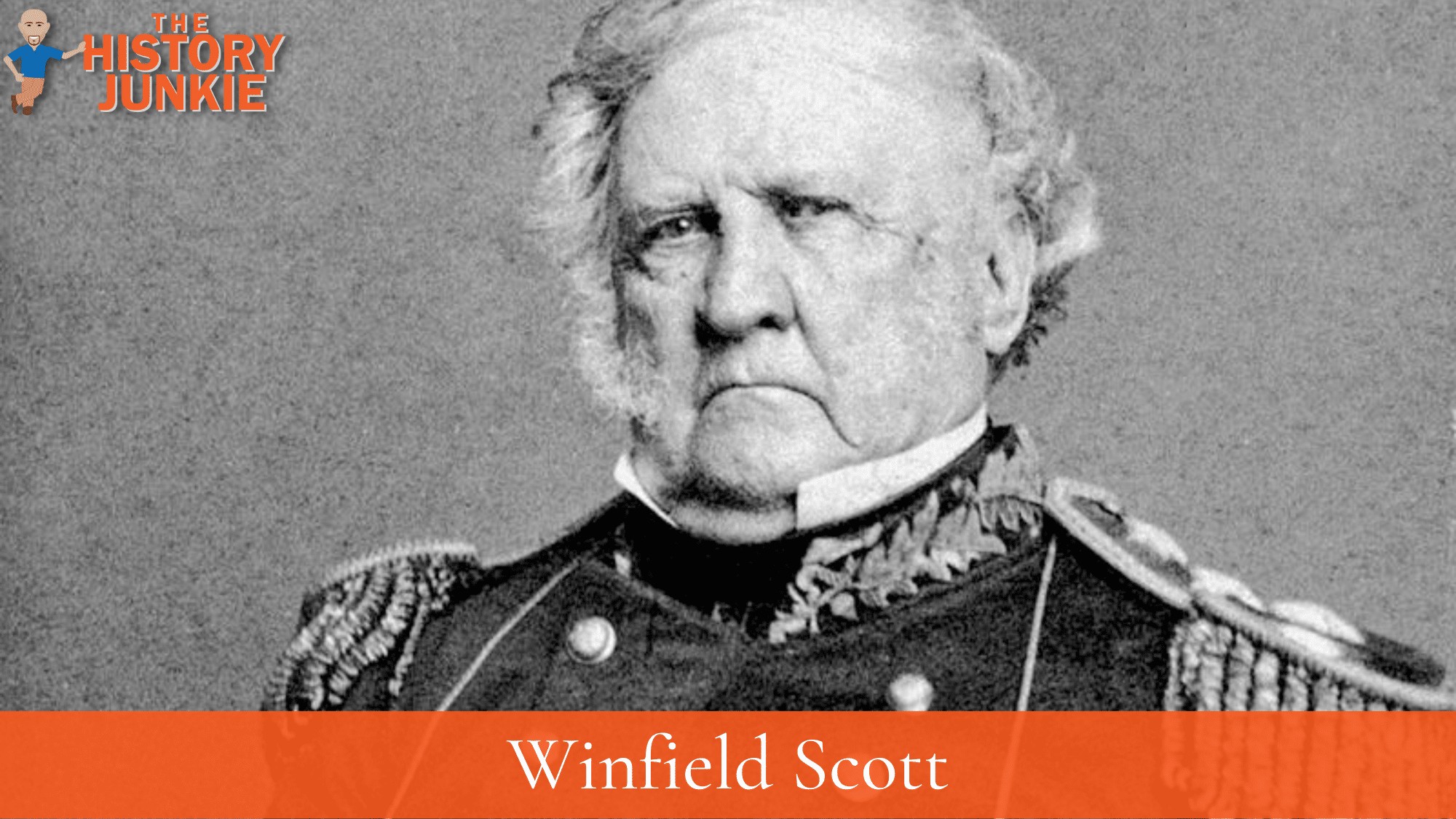
Winfield Scott was not an active General during the Civil War. He had served in the United States Military during the War of 1812 and the Mexican War.
At the time of the Civil War, he was located in West Point, severely overweight, and suffering from various health issues. Even so, Abraham Lincoln sought his advice, and Scott came up with the plan that would actually win the war when Grant executed it.
His plan was the Anaconda Plan, which called for a Union Blockade and Union control of the Mississippi. These were all executed, and it strangled the Confederacy and allowed the Union to use its overwhelming resources to finish them off.
When Grant was appointed as lead commander of the Union Army, Winfield Scott sent him his memoirs and inscribed it "from the oldest to the greatest general."
Read Article: Winfield Scott Family Tree
Best Moment:
Anaconda Plan - This would be the plan that ultimately won the war. The plan seemed common sense, but Lincoln had a hard time finding a General that could implement it. Grant did and took control of the Mississippi. The Union blockade held for the war and Sherman's March would devastate the South's will to fight and destroy its cities.
Worse Moment:
Recommending Robert E. Lee - When secession became imminent, Winfield Scott recommended Robert E. Lee as commander-in-chief of the Union Army. Unfortunately, Lee would resign and choose to fight for his home state in a losing effort. He also recommended Halleck
8. Winfield Scott Hancock
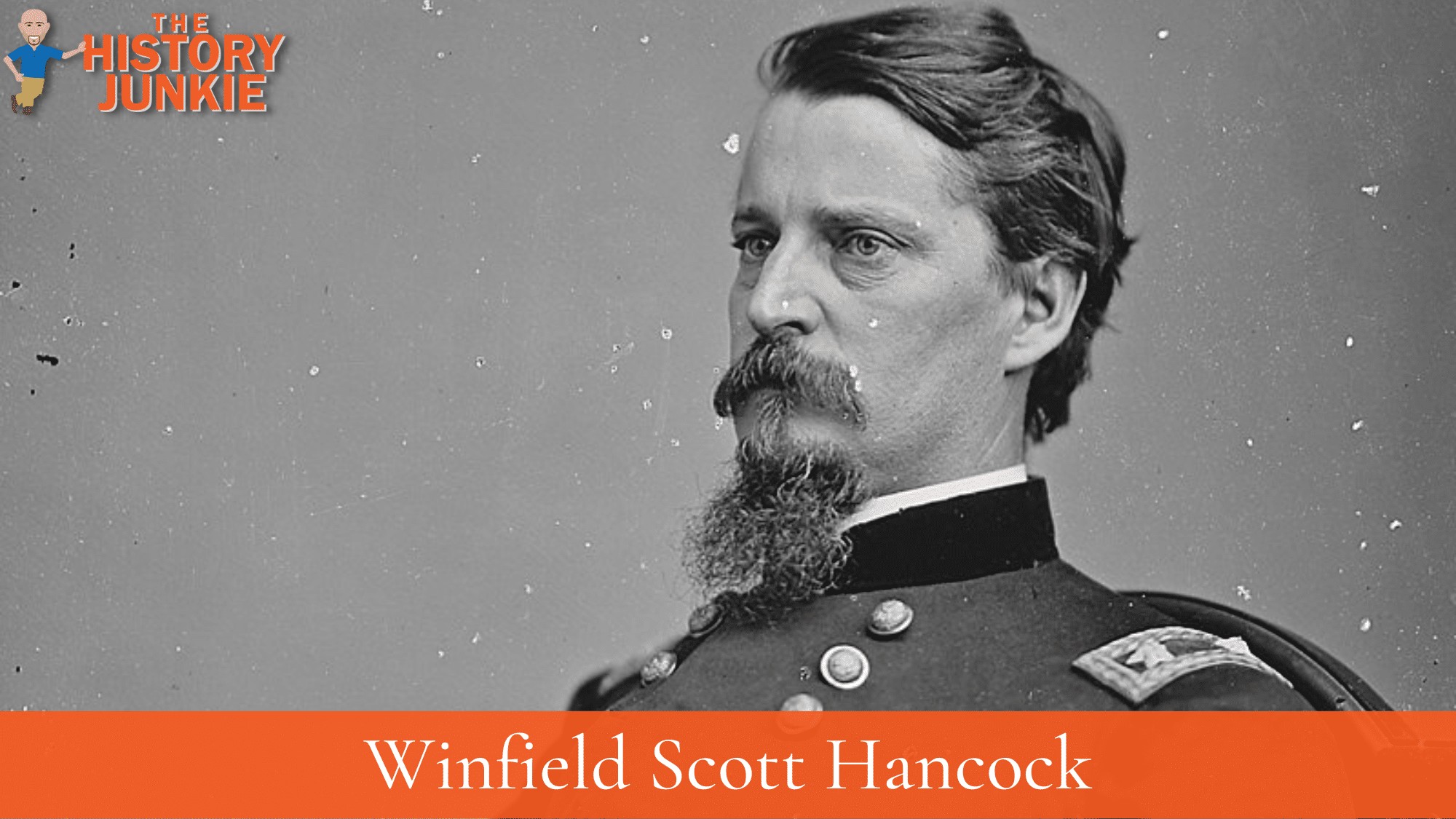
Winfield Scott Hancock is known for his actions at Gettysburg, which have immortalized him and also caused many of his other actions to fade into the background.
He was known as a "superb" commander by his peers and saw success under every General he served under, including George McClellan during the Peninsula Campaign.
During Gettysburg, he saw serious action on days 2 and 3 of the battle. On Day 2, his men were up against Longstreet's men, and it seemed as if the Confederates might break the Union line, but some daring maneuvers by the men from Minnesota that resulted in 87% casualties allowed Hancock time to tighten his defenses and push Longstreet back.
On Day 3, he would be at the center of Pickett's charge, and it would be his men that obliterated Pickett's division. During the battle, he was asked to get off his horse, and it is recorded that he said, "There are times when a corps commander's life does not count."
He was wounded in Gettysburg, and it would ail him the rest of the war. He fought and saw much success during the Overland Campaign and lost many men during his frontal assault on Cold Harbor.
Read Article: Winfield Scott Hancock Family Tree
Best Moment:
Battle of Gettysburg - There is little dispute about what Hancock's shining moment was during the Civil War. His tactics, leadership, and resolve all showed during the Battle of Gettysburg. It was said that "No other Union general at Gettysburg dominated men by the sheer force of their presence more completely than Hancock"
Worst Moment:
Overland Campaign - Hancock fought well throughout the Overland Campaign, however, there was one blunder that often goes unnoticed. After Grant's army slipped past Lee's army to cross the James River, Hancock found himself in a position from which he might have ended the war. His corps arrived to support William Farrar Smith's assaults on the lightly held Petersburg defensive lines, but he deferred to Smith's advice because Smith knew the ground and had been on the field all day, and no significant assaults were made before the Confederate lines were reinforced. One of the great opportunities of the war was lost.
9. George McClellan
George McClellan is often rated as one of the worst generals of the Civil War.
He won a small battle at the Battle of Phillipi, which put him onto the scene and got the attention of Abraham Lincoln. He would eventually be given command of the Army of the Potomac.
He organized and drilled the Army of the Potomac to the point they were well-disciplined and ready to fight, but he never moved. Finally, after being prodded by Lincoln, he began the Peninsula Campaign.
The Peninsula Campaign would end in a disaster, with Robert E. Lee launching several attacks on the Union and causing McClellan to become more reluctant.
What McClellan lacked was the ability to press his advantage and constantly dog Lee. If he had continued to attack, then he may have been able to wear Lee down, but he did not have the stomach for the casualties it would take to implement that strategy.
He may have been a good defensive commander, but the Union side required the commanders to take the offensive.
Lincoln requested his services twice, and both times, he failed. McClellan became such an adversary in Lincoln that he challenged him in the election of 1864.
Read Article: George McClellan Family Tree
Best Moment:
Battle of Antietam - It can be argued that this was not McClellan's best moment since Abraham Lincoln did not like his reluctance to counterattack a beaten Confederate force. However, the victory gave Lincoln the leverage he needed to issue the Emancipation Proclamation. McClellan's previous best moment was a skirmish at the Battle of Philippi.
Worse Moment:
Peninsula Campaign - McClellan had overwhelming numbers but lacked the guts to use them. He was also fooled by J.E.B. Stuart, who made him look like a fool and hesitated against Robert E. Lee, who knew how to fight a war against McClellan. Instead of using his advantage, he tried to put the Confederates under siege. A move that Robert E. Lee was not going to allow. His constant attacks shook McClellan and caused a hit to his reputation.
10. Ambrose Burnside
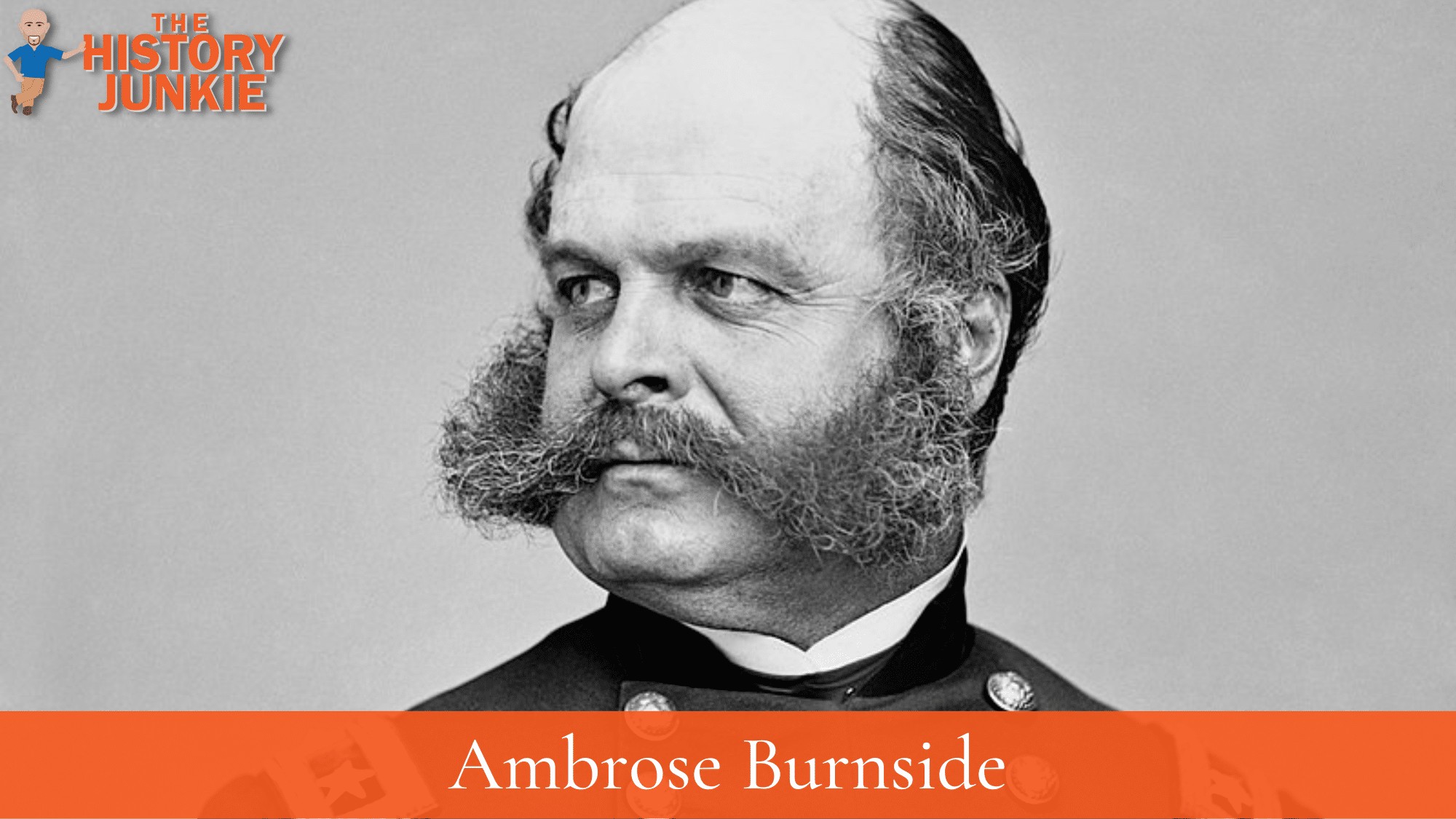
Ambrose Burnside served without distinction for most of the war. He seemed to always be promoted despite never serving with distinction in many battles.
He served throughout the beginning of the war and took part in the First Battle of Bull Run, North Carolina's Expedition, Maryland Campaign, Battle of Fredericksburg, Morgan's Raid, Overland Campaign, and the Siege of Petersburg.
He was promoted to replace George McClellan but was met with disaster at Fredericksburg. Unlike others who came before him, Burnside seemed to understand his limitations and even offered to resign. Lincoln did not accept his resignation and believed he could find a spot for him to be successful.
Burnside did well when he stopped Morgan's Raid and captured the Confederates, bringing terror to Indiana, Ohio, and Pennsylvania.
Post-war, he was an excellent politician and served as the Governor of Rhode Island.
Bruce Catton said it best:
Burnside had repeatedly demonstrated that it had been a military tragedy to give him a rank higher than colonel. One reason might have been that, with all his deficiencies, Burnside never had any angles of his own to play; he was a simple, honest, loyal soldier, doing his best even if that best was not very good, never scheming or conniving or backbiting. Also, he was modest; in an army many of whose generals were insufferable prima donnas, Burnside never mistook himself for Napoleon. Physically he was impressive: tall, just a little stout, wearing what was probably the most artistic and awe-inspiring set of whiskers in all that bewhiskered Army. He customarily wore a high, bell-crowned felt hat with the brim turned down and a double-breasted, knee-length frock coat, belted at the waist—a costume which, unfortunately, is apt to strike the modern eye as being very much like that of a beefy city cop of the 1880s.
Read Article: Ambrose Burnside Family Tree
Best Moment:
North Carolina Expedition - Burnside saw success while trying to implement the Anaconda Plan. He won the Battle of Roanoke Island and the Battle of New Bern. These battles were strategic and helped enforce the Union Blockade. He would leave North Carolina to help McClellan, and the next Union commander to journey into North Carolina would be William Sherman in 1865.
Worst Moment:
Battle of Fredericksburg - He was reluctant to take command of the Army of the Potomac due to not believing he was fit for the command. There were many disasters that occurred at Fredericksburg, and while some were not Burnside's fault, he did not adapt well to the changes. The result was a humiliating defeat for the Union and a dip in morale. Burnside put in his resignation after the battle, but Lincoln denied it.
11. Philip Sheridan
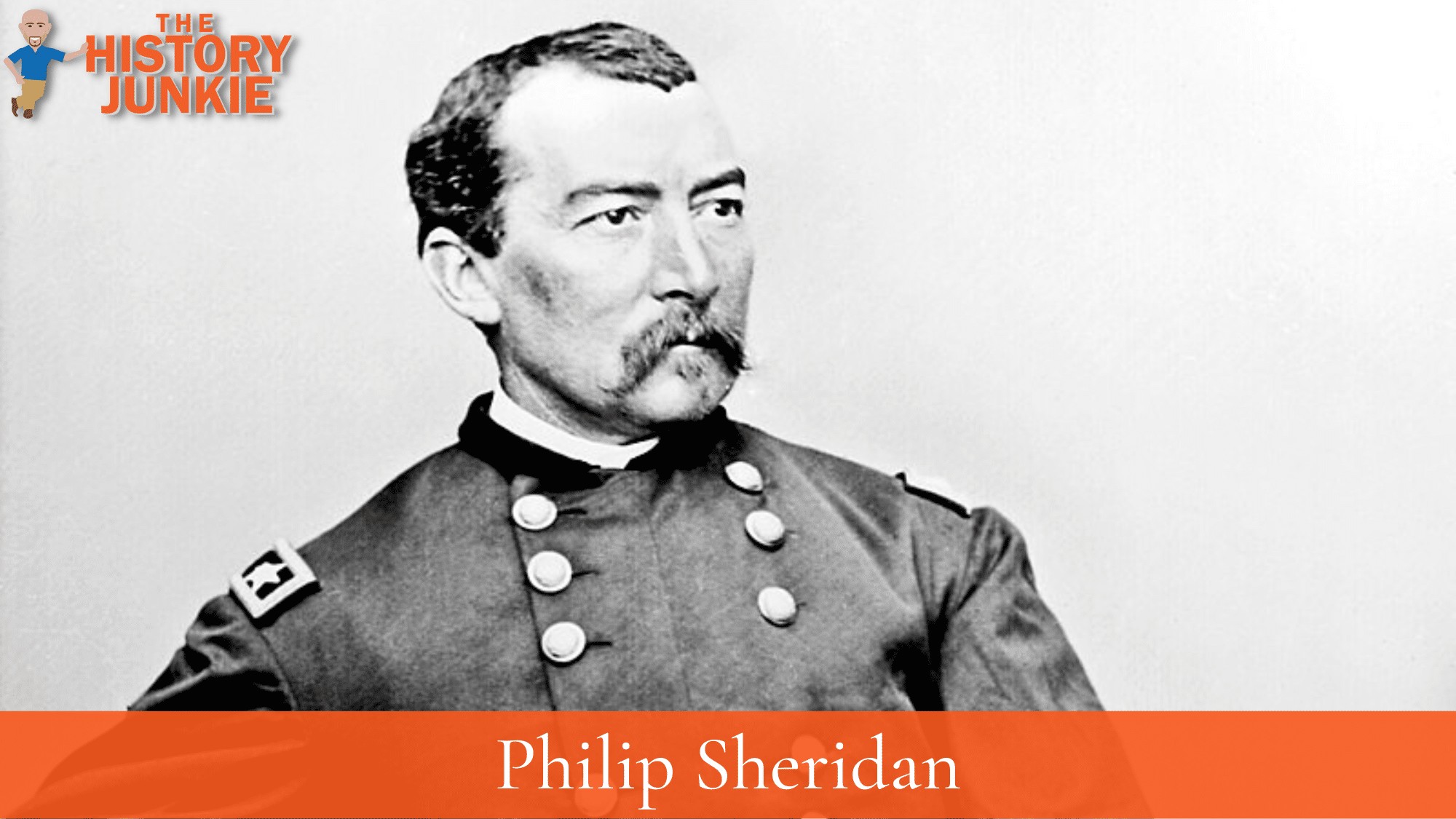
Philip Sheridan is recognized as one of the most brilliant military strategists and tacticians of the war. His actions during the Shenandoah Campaign crushed the Confederate Army and hastened the end of the Civil War.
He played an essential role on Days 2 and 3 of Gettysburg.
Sheridan arrived at Gettysburg on July 2, 1863, and immediately took command of the Union cavalry. He ordered a series of cavalry attacks against the Confederate left flank, which helped to turn the tide of the battle.
On July 3, Sheridan's cavalry again played a key role in the Union victory. They attacked the Confederate rear, which helped to force the Confederates to retreat.
Philip Sheridan defeated Jubal Early's Army in the Valley Campaign of 1864. Sheridan's army was larger and better equipped than Early's, and he used his superior numbers and firepower to defeat Early in a series of battles. Sheridan also used his cavalry to great effect, harassing Early's army and disrupting his supply lines.
The first major battle of the campaign was the Battle of Third Winchester, fought on September 19, 1864. Sheridan attacked Early's army and drove them back.
The next day, Sheridan attacked Early's army again at the Battle of Fisher's Hill. Sheridan's army was victorious, and Early was forced to retreat.
Sheridan's victory in the Valley Campaign of 1864 was a major turning point in the Civil War. It helped to secure the Union's victory in the war, and it also helped to end the Confederacy's hopes of winning the war.
His army also mortally wounded J. E. B. Stuart at the Battle of Yellow Tavern.
He would be present when Robert E. Lee surrendered to Ulysses S. Grant at Appomattox Courthouse.
Read Article: Philip Sheridan Family Tree
Best Moment:
Valley Campaign - Sheridan had many great moments in the war, but none were more crippling than his actions during the Valley Campaign. Then, he destroyed Jubal Early's Army and weakened the Confederacy. He used similar tactics that Grant used in pressing his number advantage and never allowing the Confederates to rest even if the rebels held off the Union the next day or shortly after he would attack them again.
Worst Moment:
Battle of Spotsylvania Courthouse - Sheridan's actions at Spotsylvania Court House were controversial. Some have criticized him for not being more aggressive in his attacks, while others have praised him for his ability to hold the Confederates off. Ultimately, Sheridan's role in the Battle of Spotsylvania Court House was a mixed bag. He made some mistakes, but he also made some important contributions to the Union war effort.
12. George Armstrong Custer
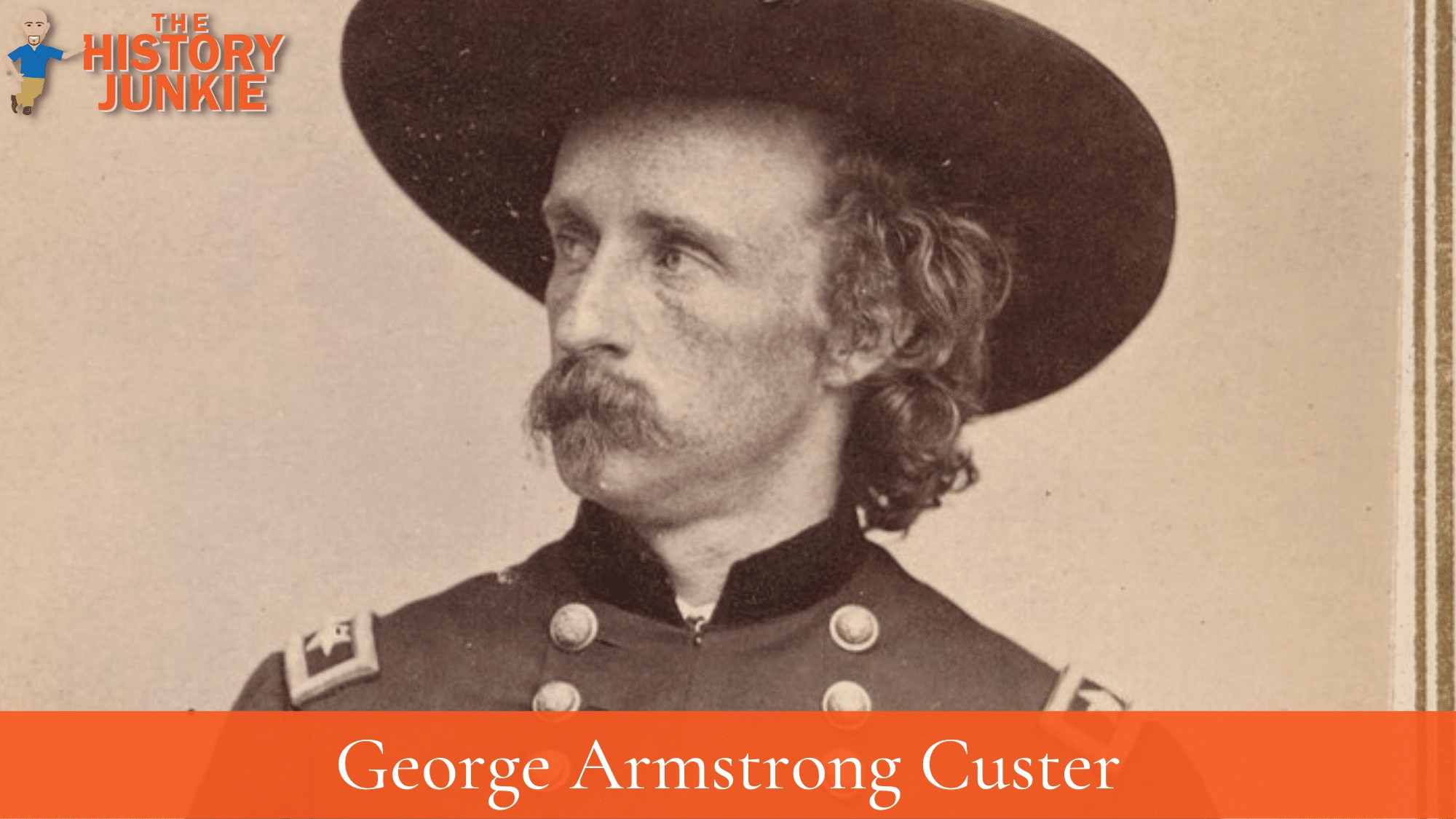
One of the more overlooked Civil War Generals is George Armstrong Custer. He is obviously known as an Indian fighter who was killed at the Battle of Little Big Horn, but many forget that he was known as the boy general who became the youngest General in the Civil War.
He rose quickly and served as an aide de camp for George McClellan and would eventually be given command of the Michigan cavalry. He groomed his men to become like him, and they were known as Wolverines for their aggression.
He fought at Gettysburg and had two encounters with Stuart. The most significant encounter occurred on the third day of the battle when Stuart was going to help support Pickett's charge.
Outnumbered but undaunted, Custer rode to the head of the regiment, "drew his saber, threw off his hat so they could see his long yellow hair," and shouted... "Come on, you Wolverines!"
Custer formed his men in the line of battle and charged. "So sudden was the collision that many of the horses were turned end over end and crushed their riders beneath them...."
As the Confederate advance stopped, their right flank was struck by troopers of the Fifth, Sixth, and Seventh Michigan.
Within twenty minutes, the combatants heard the sound of the Union artillery opening up on Pickett's men. Stuart knew that whatever chance he had of joining the Confederate assault was gone. He withdrew his men to Cress Ridge.
General Custer participated in Sheridan's campaign in the Shenandoah Valley. The civilian population was specifically targeted in what is known as the Burning.
Custer was present at the surrender at Appomattox Court House, and the table upon which the surrender was signed was presented to him as a gift for his wife by Sheridan, who included a note to her praising Custer's gallantry.
Read Article: George Armstrong Custer Family Tree
Best Moment:
Battle of Gettysburg - His attack on Stuart, despite being outnumbered, made Pickett's charge even more vulnerable. Stuart was unable to support the charge, and it was due to Custer's aggression and heroics. He showed no fear of dying, and he would again meet Stuart in the Shenandoah Valley, where he was mortally wounded.
Worst Moment:
Clarksville, Virginia - Custer did not have too many terrible moments during the Civil War. He did have one just after the war ended when he stole a prized horse from a citizen in Clarksville. The horse was worth $10,000, which would be worth six digits in today's money. The owner wrote General Grant, who then ordered Custer to return the horse. He did not, instead hiding the horse and winning a race with it the next year before the horse died suddenly. This shows his weak character despite his unbelievable bravery.
